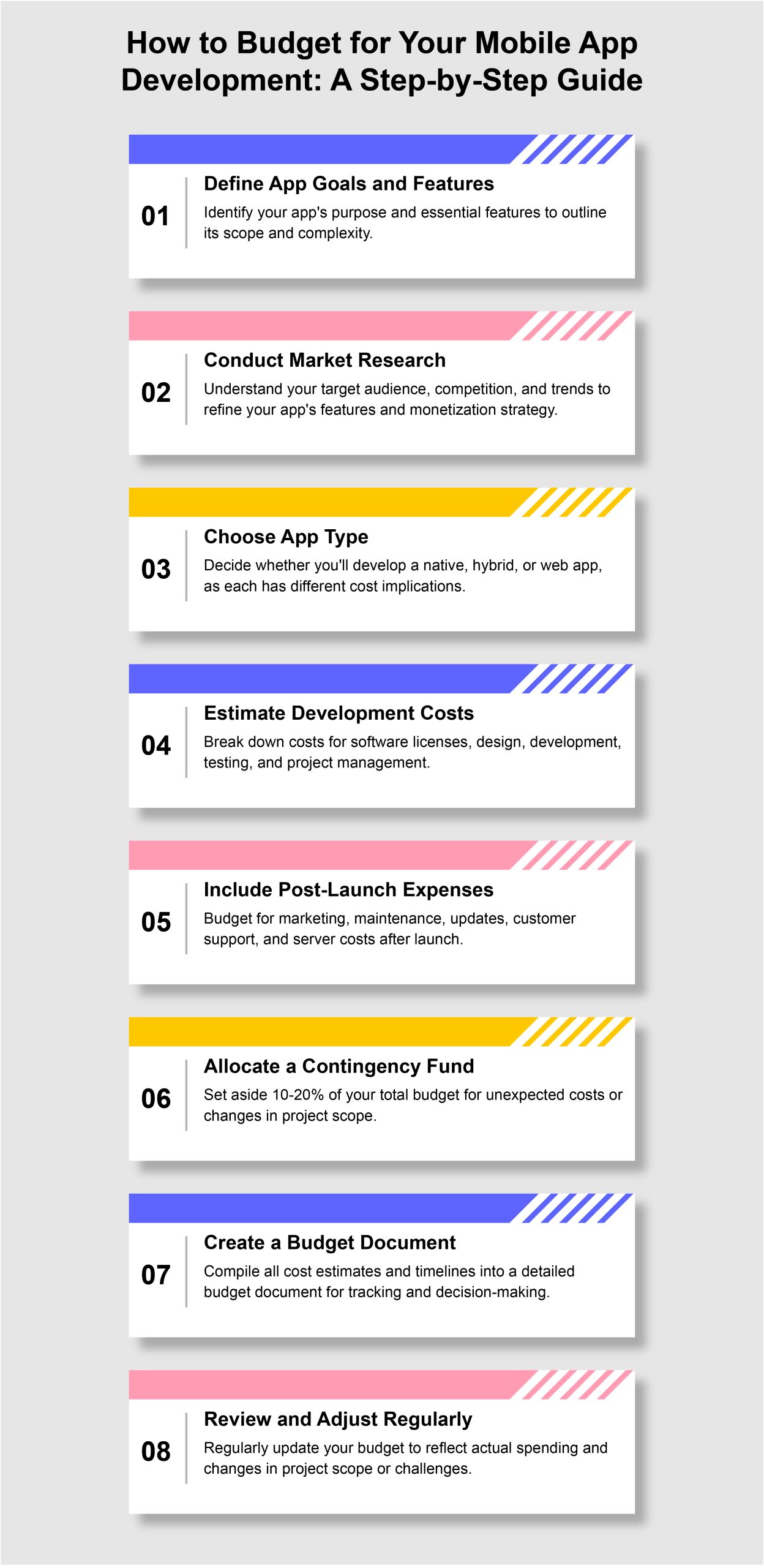Let's Get You Started

Let's Get You Started




Setting off on your app development journey can feel like walking through a maze. You’ll encounter various paths and decisions along the way. One key aspect that often confuses many is the fixed costs involved. If you are looking to get educated about fixed costs for app development then you are at the right place. This ensures you have the necessary knowledge for making wise decisions. Whether you’re an aspiring entrepreneur, a business owner eager to get involved into app development, or just curious, this guide offers insights, practical advice, and a touch of creativity. We aim to simplify the complex subject of app development costs, making it as understandable as a clear, sunny day.
Costs can be broadly categorized into two types: fixed and variable. Fixed costs, as the name suggests, are the expenses that remain constant regardless of the app’s development stage or scale. These costs are the foundation of your budgeting process, providing a stable foundation upon which to plan your project’s financial aspects.
Understanding these costs is crucial for any project manager or entrepreneur venturing into the app development field. It enables effective budget allocation and helps avoid financial downsides that could ruin your project.
Fixed costs in app development play a crucial role in the planning and execution phases. They are the non-negotiable expenses that need to be settled, irrespective of how difficult or simple your app is. By comprehensively understanding these costs, you can:
To give you a clearer picture, let’s illustrate some common fixed costs in the form of a table. This will help you visualize the potential expenses involved in app development.
| Expense Category | Estimated Cost Range |
| Software Licenses | $200 – $1,000 |
| Development Tools | $500 – $2,500 |
| App Design | $1,500 – $10,000 |
| Project Management | $100 – $500/month |
| Cloud Services | $300 – $2,000/month |
| Salaries/Contracts | $2,000 – $10,000/month |
Note: The above figures are indicative and can vary based on the project’s scope, the complexity of the app, and the geographical location of your team or app development company.
While fixed costs might seem terrifying at first, there are several strategies to effectively manage and even reduce them without compromising on quality.

Launching an app is similar to setting sail on the vast digital ocean. However, the journey doesn’t end at the launch; it simply begins. Beyond the horizon lie the post-launch expenses—predictable yet often overlooked costs essential for maintaining your app’s course towards success. Understanding these expenses is crucial for long-term budgeting and ensuring your app remains competitive, functional, and engaging.
The digital realm is ever-evolving, with new operating system updates, security threats, and user expectations. Ongoing maintenance is a cornerstone expense, ensuring your app remains compatible with new devices and OS versions. This includes bug fixes, performance enhancements, and security patches to safeguard user data. Allocating funds for regular maintenance ensures your app remains in prime condition, providing a seamless user experience.
User feedback is a goldmine of insights, often highlighting the need for additional features or improvements to existing ones. Incorporating this feedback requires investment in development and design. Regular updates not only keep your app relevant but also help in retaining users and attracting new ones. Planning for iterative improvements post-launch can transform a static app into a dynamic platform that grows with its user base.
The launch of your app is just the beginning of its market journey. Sustained visibility in a crowded marketplace requires ongoing marketing efforts. This includes search engine marketing (SEM), social media campaigns, content marketing, and possibly influencer partnerships. Each of these channels incurs costs but is essential for building and maintaining a strong user base. Budgeting for continuous marketing activities ensures your app remains in the public eye, driving downloads and engagement.
To direct your app towards success, you need insights into how users interact with it. Investing in analytics tools helps track user behavior, engagement levels, and conversion rates. This data is invaluable for making informed decisions about future updates, marketing strategies, and monetization efforts. While some analytics services offer free basic packages, more comprehensive tools or services may require a subscription or one-time fee.
The digital world is not just about technology but also compliance with legal standards and regulations. Post-launch, you may need to update your privacy policy, terms of service, or comply with new regulations like GDPR or CCPA. These updates might require consultation with legal professionals, incurring additional costs. Furthermore, administrative expenses, such as renewing domain names or increased cloud storage fees due to user growth, also need consideration.
Providing users with reliable support is crucial for retention and reputation. Post-launch, setting up a customer support system—be it through email, chatbots, or a dedicated helpdesk—incurs costs. However, this investment significantly enhances user satisfaction and loyalty, addressing issues promptly and gathering feedback for future improvements.
Understanding the nuances of fixed costs in app development is akin to mastering the art of navigation in uncharted waters. It empowers you to steer your project with confidence, make informed decisions, and ultimately, launch a successful app that stands the test of time. Remember, knowledge is power, and in the dynamic landscape of app development, it’s your most valuable asset. Keep exploring, stay curious, and let the adventure of bringing your digital vision to life begin!
A 1: Fixed costs are expenses that do not change regardless of your app's development phase or the number of users. Variable costs fluctuate based on these factors, such as additional cloud storage fees as user numbers grow.
A 2: While fixed costs are generally stable, they can change if you decide to upgrade tools, expand your team, or shift to more expensive cloud services as your app scales.
A 3: Start by listing all the necessary tools, services, and personnel for your project. Contact vendors for quotes and consult with an app development company for a comprehensive estimate.
A 4: Yes, costs like app store submission fees, maintenance contracts, and security certifications can add up. Always allocate a buffer in your budget for unforeseen expenses.
A 5: Properly managing fixed costs ensures that your project stays within budget, preventing financial overruns that could compromise other aspects of development or even halt progress.

Welcome to Appxide, where innovation meets utility in the world of app development. Our mission is to craft cutting-edge digital solutions that simplify lives and spark connections. With a diverse portfolio that traverses multiple sectors, we are committed to excellence and user-centric design. Stay tuned to our blog for the latest in tech, insights, and the stories behind our projects. Dive into the future with us – where every app we create is a step towards the extraordinary.